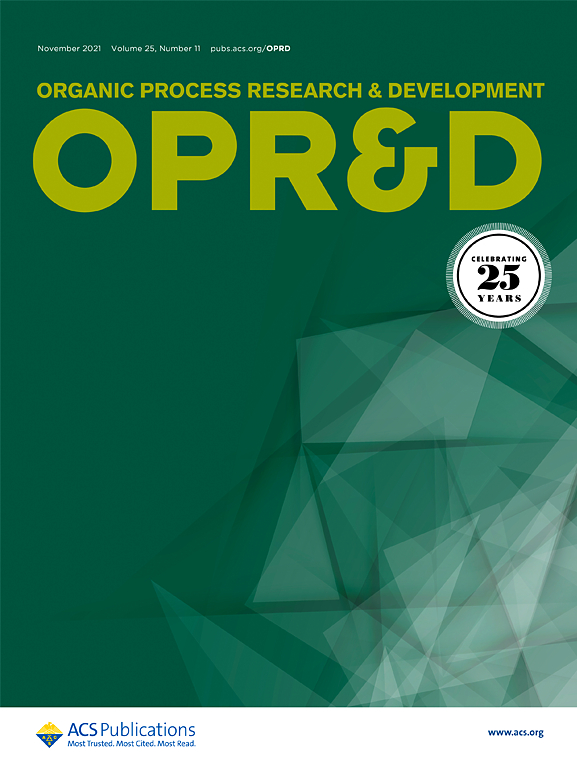Solvent Eco-Impact Metric: A Tool for Chemists to Drive Sustainability in Chemical Processes across Safety, Health, Waste, and Environmental Aspects
IF 3.1
3区 化学
Q2 CHEMISTRY, APPLIED
引用次数: 0
Abstract
The synthesis of active pharmaceutical ingredients (APIs) demands extensive resources, with solvents playing a pivotal role in shaping the safety, health, waste, and environmental impacts of chemical processes. To address the absence of a tailored metric for the requirements of the pharmaceutical industry to rapidly quantify and compare these impacts, we developed a novel tool providing concrete operational guidance to enhance sustainability, cost-effectiveness, and operational efficiency. This metric leverages a comprehensive data set, prioritizes critical impact categories, and evaluates solvent quantities relative to the product output. These features enable it to effectively identify areas of improvement in chemical processes and guide sustainable development initiatives. The experience of the application of the metric by a contract development and manufacturing organization to its processes is presented, demonstrating the effectiveness of the metric for internal benchmarking and establishing sustainability criteria. Furthermore, the metric provided structured, actionable guidelines to support daily process development activities, ultimately serving as a practical tool to achieve corporate environmental, social, and governance (ESG) objectives. While the described benchmarking is not proposed as a general industry standard, the method is adaptable to the unique context and requirements of any chemical or pharmaceutical company. Case studies underscore its capability to pinpoint high-impact solvents, support targeted interventions, and achieve notable reductions in sustainability impacts. Aligned with the United Nations Sustainable Development Goal for responsible production, this metric integrates seamlessly into process evaluation tools, enabling consistent, data-driven improvements. Designed to complement existing methodologies rather than replace them, it enhances chemical process assessments with a rapid, decision-focused approach tailored to the priorities and key impact categories of the pharmaceutical industry. This practical tool fosters sustainability and operational efficiency, addressing critical industry needs.

求助全文
约1分钟内获得全文
求助全文
来源期刊
CiteScore
6.90
自引率
14.70%
发文量
251
审稿时长
2 months
期刊介绍:
The journal Organic Process Research & Development serves as a communication tool between industrial chemists and chemists working in universities and research institutes. As such, it reports original work from the broad field of industrial process chemistry but also presents academic results that are relevant, or potentially relevant, to industrial applications. Process chemistry is the science that enables the safe, environmentally benign and ultimately economical manufacturing of organic compounds that are required in larger amounts to help address the needs of society. Consequently, the Journal encompasses every aspect of organic chemistry, including all aspects of catalysis, synthetic methodology development and synthetic strategy exploration, but also includes aspects from analytical and solid-state chemistry and chemical engineering, such as work-up tools,process safety, or flow-chemistry. The goal of development and optimization of chemical reactions and processes is their transfer to a larger scale; original work describing such studies and the actual implementation on scale is highly relevant to the journal. However, studies on new developments from either industry, research institutes or academia that have not yet been demonstrated on scale, but where an industrial utility can be expected and where the study has addressed important prerequisites for a scale-up and has given confidence into the reliability and practicality of the chemistry, also serve the mission of OPR&D as a communication tool between the different contributors to the field.

 求助内容:
求助内容: 应助结果提醒方式:
应助结果提醒方式:


